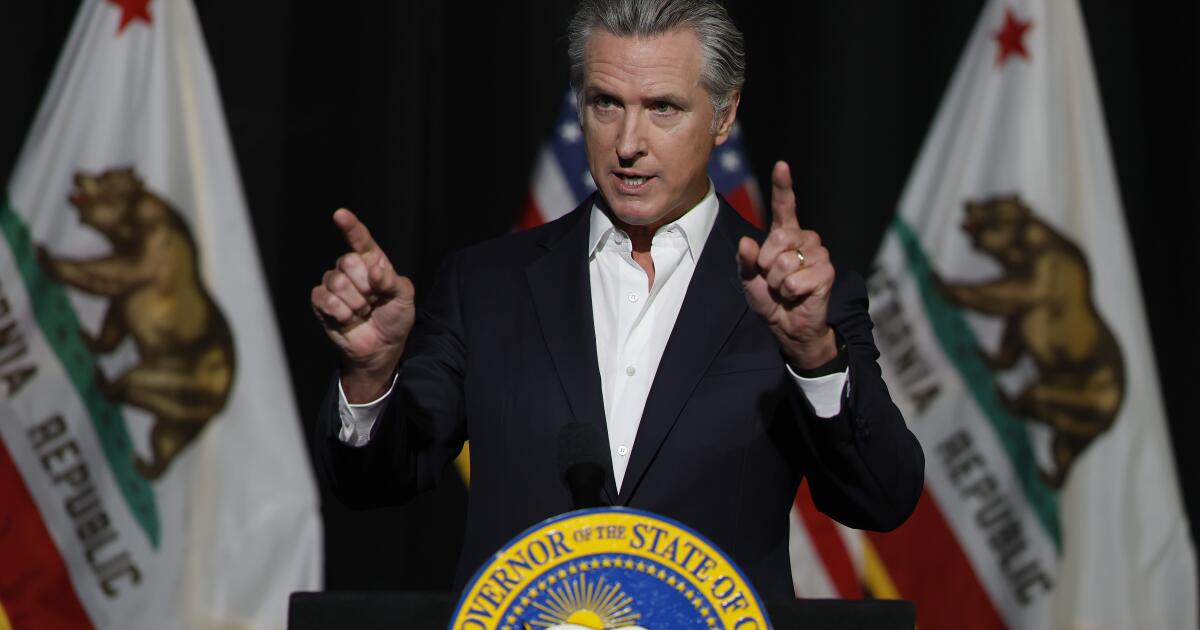Federal judge orders Trump administration to fully fund SNAP benefits in November
A federal judge in Rhode Island ordered the Trump administration Thursday to find the money to fully fund SNAP benefits for November.
The ruling by U.S. District Judge John J. McConnell Jr. gave President Trump’s administration until Friday to make the payments through the Supplemental Nutrition Assistance Program, though it’s unlikely the 42 million Americans — about 1 in 8, most of them in poverty — will see the money on the debit cards they use for groceries nearly that quickly.
The order was in response to a challenge from cities and nonprofits complaining that the administration was only offering to cover 65% of the maximum benefit, a decision that would have left some recipients getting nothing for this month.
“The defendants failed to consider the practical consequences associated with this decision to only partially fund SNAP,” McConnell said in a ruling from the bench after a brief hearing. “They knew that there would be a long delay in paying partial SNAP payments and failed to consider the harms individuals who rely on those benefits would suffer.”
The White House did not immediately respond to a request for comment on Thursday.
McConnell was one of two judges who ruled last week that the administration could not skip November’s benefits entirely because of the federal shutdown.
The Trump administration chose partial payments this week
Last month, the administration said that it would halt SNAP payments for November if the government shutdown wasn’t resolved.
A coalition of cities and nonprofits sued in federal court in Rhode Island and Democratic state officials from across the country did so in Massachusetts.
The judges in both cases ordered the government to use one emergency reserve fund containing more than $4.6 billion to pay for SNAP for November but gave it leeway to tap other money to make the full payments, which cost between $8.5 billion and $9 billion each month.
On Monday, the administration said it would not use additional money, saying it was up to Congress to appropriate the funds for the program and that the other money was needed to shore up other child hunger programs.
The partial funding brought on complications
McConnell harshly criticized the Trump administration for making that choice.
“Without SNAP funding for the month of November, 16 million children are immediately at risk of going hungry,” he said. “This should never happen in America. In fact, it’s likely that SNAP recipients are hungry as we sit here.”
Tyler Becker, the attorney for the government, unsuccessfully argued that the Trump administration had followed the court’s order in issuing the partial payments. “This all comes down to Congress not having appropriated funds because of the government shutdown,” he said.
Kristin Bateman, a lawyer for the coalition of cities and nonprofit organizations, told the judge the administration had other reasons for not fully funding the benefits.
“What defendants are really trying to do is to leverage people’s hunger to gain partisan political advantage in the shutdown fight,” Bateman told the court.
McConnell said last week’s order required that those payments be made “expeditiously” and “efficiently” — and by Wednesday — or a full payment would be required. “Nothing was done consistent with the court’s order to clear the way to expeditiously resolve it,” McConnell said.
There were other twists and turns this week
The administration said in a court filing on Monday that it could take weeks or even months for some states to make calculations and system changes to load the debit cards used in the SNAP program. At the time, it said it would fund 50% of the maximum benefits.
The next day, Trump appeared to threaten not to pay the benefits at all unless Democrats in Congress agreed to reopen the government. His press secretary later said that the partial benefits were being paid for November — and that it is future payments that are at risk if the shutdown continues.
And Wednesday night, it recalculated, telling states that there was enough money to pay for 65% of the maximum benefits.
Under a decades-old formula in federal regulations, everyone who received less than the maximum benefit would get a larger percentage reduction. Some families would have received nothing and some single people and two-person households could have gotten as little as $16.
Carmel Scaife, a former day care owner in Milwaukee who hasn’t been able to work since receiving multiple severe injuries in a car accident seven years ago, said she normally receives $130 a month from SNAP. She said that despite bargain hunting, that is not nearly enough for a month’s worth of groceries.
Scaife, 56, said that any cuts to her benefit will mean she will need to further tap her Social Security income for groceries. “That’ll take away from the bills that I pay,” she said. “But that’s the only way I can survive.”
The next legal step is unclear
This type of order is usually not subject to an appeal, but the Trump administration has challenged other rulings like it before.
An organization whose lawyers filed the challenge signaled it would continue the battle if needed.
“We shouldn’t have to force the President to care for his citizens,” Democracy Forward President and CEO Skye Perryman said in a statement, “but we will do whatever is necessary to protect people and communities.”
It often takes SNAP benefits a week or more to be loaded onto debit cards once states initiate the process.
Mulvihill and Casey write for the Associated Press. AP writers Sara Cline in Baton Rouge, La.; Susan Haigh in Hartford, Conn.; and Gary Robertson in Raleigh, N.C., contributed to this report.

